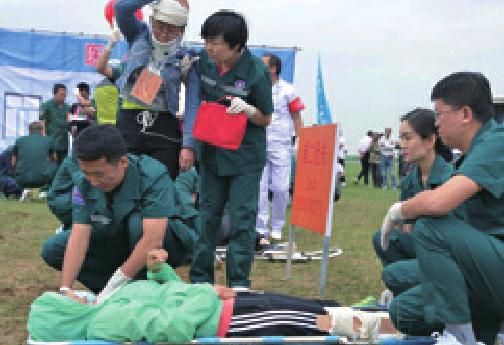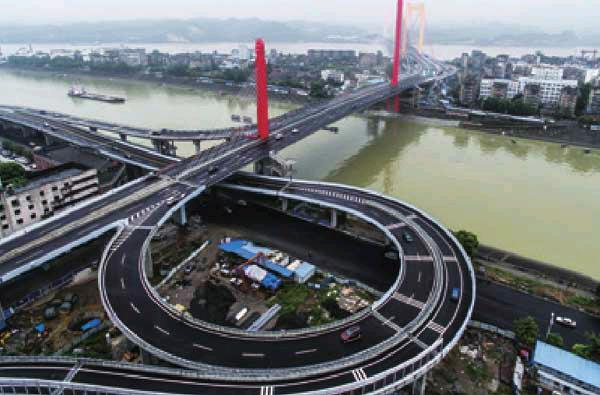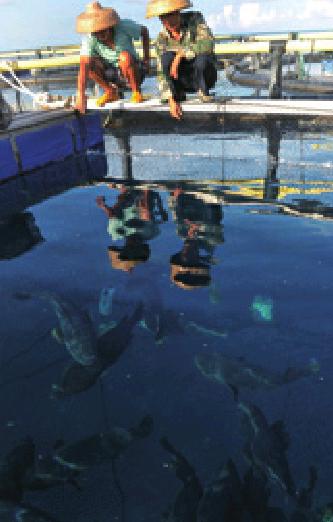Returning Home
2016-08-17
Chinese military team members carry the coffin of a peacekeeper killed in South Sudan to a China-bound airplane at Entebbe International Airport in Uganda on July 19.
Two Chinese UN peacekeepers were killed and three of their colleagues were injured in the fighting between two South Sudan rival army factions in the capital city of Juba on July 13.
Accountability System
The Communist Party of China on July 17 published a regulation that introduces a new accountability mechanism.
The accountability mechanism targets leaders of Party committees and discipline inspection commissions at various levels and holds them responsible for serious consequences caused by negligence or poor work performance.
According to the severity of their wrongdoings, leading officials who commit misconduct will be subject to punishments such as naming and shaming, receiving oral or written warnings, suspension, transferal, demotion, forced resignation, or dismissal. They are also subject to punishment under the Partys discipline regulation if they are found violating Party rules.
Party committees, departments and discipline inspection commissions will also be held accountable for violations of Party rules as well as poor work performance, according to the regulation, which came into effect on July 8.
In cases of serious dereliction of duty and violation of Party regulations, Party organizations shall be restructured, and both organizations and officials may receive multiple punishments for the same wrongdoing, according to the document.
The public will be informed of serious cases, it added.
Public Interest Lawsuits
Chinese procuratorates had filed 30 public-interest lawsuits at courts by the end of June under a pilot reform, the Supreme Peoples Procuratorate(SPP) said on July 18.
The cases include 11 civil litigation cases, 18 administrative litigation cases and one combined civil and administrative litigation, the SPP said. Over 76 percent of the lawsuits—23 cases—relate to environmental protection issues.
In July 2015, the SPP began a two-year pilot program allowing prosecutors in 13 provincial divisions to initiate public-interest litigation cases on environmental protection, preservation of state assets as well as food and drug safety.
Poverty Relief
The Ministry of Finance (MOF) said on July 19 that more than 66 billion yuan ($9.87 billion) has been approved for local authorities to spend on poverty relief. The amount has increased over 40 percent year on year.
The funds will be used to relocate rural households, help minorities, increase relief work and revive state-owned farms, said an MOF statement.
Vice Premier Wang Yang said in early July that the government should strengthen capital and personnel support to achieve the annual poverty reduction target.
China aims to reduce its impoverished population by more than 10 million this year as part of an ambitious plan to completely eliminate poverty by 2020.
Silk Road Research
Researchers started excavation on July 18 of an ancient port in north Chinas Hebei Province to help determine where the historical maritime Silk Road began.
The excavation, which will last at least six months, is expected to provide more evidence to support the idea that the ancient port of Haifeng was a departure point for porcelain exports transported by ship, said Feng Enxue, an archaeologist at Jilin University.
Located in the present-day port city of Huanghua, the ruins of Haifeng Township cover an area of 2.28 million square meters. During three excavations since 2000, archaeologists determined that the ruins comprised a port, a cargo collection and distribution zone, and a trade zone—a typical layout for port trading.
“The excavation will help us better figure out the details of the different zones functions and provide more evidence for the hypothesis that the Haifeng ruins were the northern starting point of the maritime Silk Road,” Feng said.
Feng proposed in 2014 that Haifeng was indeed the historical routes initial point in the north of China during the Song (960-1279) and Jin(1115-1234) dynasties, after previous excavations unearthed large amounts of porcelain featuring both southern and northern Chinese styles and resembling porcelain discovered elsewhere in Northeast Asia.
“Judging from the geographical location and the historical records of Haifeng, it is estimated that the porcelain was sold to Northeast Asia, Japan and even regions beyond,”Feng said.
Fungus Discovery
A fungus described only once 164 years ago has been rediscovered by Chinese scientists in southwest China.
The fungus, known as pleurotus placentodes, which was originally described by British botanist M. J. Berkeley in 1852 on the basis of only one specimen he collected, has been found in the eastern Himalayas and Hengduan Mountains.
“The original and the only specimen is now in very poor condition,”said Yang Zhuliang, a researcher with the Kunming Institute of Botany under the Chinese Academy of Sciences. “The new specimen can be used to identify the species, as the original specimen degrades.”
The fungus is hard to find be- cause it grows only at high altitude from June to September, during the rainy season, Yang said.
The findings have been published in the botanical journal Phytotaxa.
Cloud Seeding
The Chinese Government has allocated 199 million yuan ($29.77 million) to support weather modification operations by local authorities.
The move aims to minimize the impact of meteorological disasters on economic and social life, said a statement on the website of the Ministry of Finance on July 14.
The money will be used to relieve drought, artificially bring about rain and prevent hailstones.
Due to a strong El Nino, the world has seen a dramatic increase in extreme weather events this year, such as heat waves, droughts and torrential rain. Chinas south has suffered severe flooding, while its northwestern region is likely to experience drought.
By July 13, more than 1,508 counties across 28 provincial regions had reported floods that had resulted in 237 fatalities and 93 people missing.
Weather modification usually refers to cloud-seeding practices that involve shooting various substances—silver iodide, salts or dry ice—into clouds to cause the formation of larger raindrops and trigger downpours as well as to disperse clouds and smog.
Emergency Preparation
Medics participate in an exercise on infectious disease prevention and control and emergency medical rescue on a grassland in Siziwang Banner of Ulanqab City, north Chinas Inner Mongolia Autonomous Region, on July 19.
Multimedia Outlets
The State Administration of Press, Publication, Radio, Film and Television (SAPPRFT) announced on July 18 a target of establishing a number of competitive multimedia conglomerates by 2020.
The administration said in a circular that media organizations should develop multiple integrated and interactive information networks, which include TV and the Internet, and are supported by cloud computing and big data.
SAPPRFT will support the integration by improving laws and regulations and granting preferential market access, according to the document.
In a separate statement, SAPPRFT said that the current integration of TV, radio and new media is still rudimentary and that this falls short of industrial development plans and public expectations.
Choir Angels
Members of the Little Dolphin Hearing Disabled Childrens Choir, the worlds first choir of children wearing artificial cochlea, celebrate in Beijing after winning the silver medal at 2016 World Choir Games, held in Sochi, Russia. Figures from the China Foundation for Disabled Persons show that now there are about 27.8 million people with hearing disabilities in China.
Home Price Stabilizes
Chinas property sector continued to recover but at a slower pace in June, with fewer cities reporting monthon-month rises in new home prices, official data showed on July 18.
Of the 70 large and mediumsized cities surveyed in June, 55 saw new home prices climb month on month, down from 60 in the previous month, the National Bureau of Statistics (NBS) said.
Meanwhile, 10 cities reported month-on-month price declines, up from four in May, according to NBS data.
On a yearly basis, 57 cities posted new home price increases in June, and 12 reported falls, compared with 50 and 18 in May.
New home prices soared 47.4 percent year on year in the southern city of Shenzhen, the sharpest increase in June among all major cities. Yet, the growth was milder than the 54-percent jump registered in May.
Prices in other top-tier cities of Shanghai, Beijing and Guangzhou rose 33.7 percent, 22.3 percent and 19.4 percent year on year, respectively.
Jinzhou in northeast Chinas Liaoning Province saw the steepest price decline of 3.5 percent from a year earlier.
For existing homes, 48 cities reported month-on-month price increases in June, and 14 reported lower prices, compared with 49 and 13 in May.
Rising Protectionism
China encountered 65 traderemedy investigations launched by 17 countries and regions in the first half of 2016, surging 66.67 percent on a year-on-year basis, the Ministry of Commerce said on July 19.
Shen Danyang, a spokesman for the ministry, said that even though the rise of trade protectionism is not the fundamental reason for the prolonged global trade slowdown, it certainly is a factor.
The 65 cases, including 46 anti-dumping investigations and 13 countervailing cases, were launched by both developed and developing countries such as the United States, Brazil, Turkey and Malaysia during the six-month period.
Among them, the United States and India took the lead in initiating trade-remedy measures between January and June of this year, with 18 and 15 cases respectively against Chinese products including steel, agricultural and photovoltaic products.
A total of $8.54 billion was involved in these cases, up 156 percent year on year.
“After all, trade disputes between China and major economies such as the United States or the EU are set to grow and become more complex in view of huge trade flows. There might be more squabbles over the rules and standards affecting trade flows in the second half,” said Chen Weidong, a professor of global trade at the University of International Business and Economics in Beijing.
Brand New Bridge
The Yangtze River bridge in Yichang, central Chinas Hubei Province, opens to traffic on July 18.
The bridge, with a span of 838 meters and an investment of 2.8 billion yuan ($420 million), is an important project on the Yichang section of the Yangtze River.
Investment, Financing Reform
China will overhaul its investment and financing system to stimulate market vitality amid the economic downturn, according to a document released on July 18 by the central authorities.
The government will cut red tape, improve supervision and encourage enterprises to invest, said a guideline jointly released by the Communist Party of China Central Committee and the State Council.
China will enhance private investment management, reinforce public investment, diversify corporate financing channels and accelerate the transformation of government functions, the guideline said.
The document marked the latest efforts by the central authorities to solve entrenched funding difficulties for small companies and encourage better allocation of private capital.
Startups will see stronger financial support, while companies will be encouraged to raise funds through bond issuance, according to the document. Domestic firms and financial institutions will be granted easier access to foreign capital.
Controls on insurance capital will be relaxed to facilitate projects in infrastructure and urbanization.
Additionally, China will experiment in allowing financial institutions to hold corporate equities.
The government has started loosening its grip on investment and financing, with fewer investments subject to approval and more decision-making power in the hands of enterprises.
Silk Road E-commerce
Indian businessmen select goods at an exhibition hall of an e-commerce innovation park in Helan County of Yinchuan, capital of northwest Chinas Ningxia Hui Autonomous Region, on July 17.

New FTZ Policies
The Chinese Government has decided to ease investment rules in four free trade zones (FTZs), temporarily allowing foreign investors to found wholly owned enterprises in a number of fields, including iron and steel production and gas station operations, according to the Central Government website on July 19.
The resolution on the temporary adjustment of regulations for administrative approvals in the Shanghai, Guangdong, Tianjin and Fujian FTZs was passed by the National Peoples Congress Standing Committee, it said.
The adjustment contains a total of 51 items, with more than 20 involving changes from administrative approval to managerial registration for foreign investment.
It also approves wholly foreignowned enterprises in dozens of areas outside the negative list on foreign investment, covering sectors ranging from agriculture to transportation.
Alibabas Expansion
Chinese online retail giant Alibaba announced on July 19 that it will open its first office in the Australian city of Melbourne later this year.
Alibabas President, Michael Evans, said that Australia is a “huge part” of the companys long-term globalization strategy to increase its 423 million customers to 2 billion by 2036, as it plans to expand its presence internationally.
The e-commerce business currently has eight staff in Australia.
Evans said that most of Australias dealings with Alibaba center on milk powder.
There are 1,300 Australian businesses selling on Alibabas online global platforms, and the company is confident that number will rise once it begins its expansion into Australia.
Power Transmission Project
A project to transfer electricity from Chinas resource-rich west and north to its energy-thirsty east began construction on July 18 in north Chinas Inner Mongolia Autonomous Region.
The Shanghaimiao power transmission base, designed for coal-fired power generation for Shandong Province in east China, is located in Erdos, a city with one sixth of the countrys coal resources.
It is the second national power transmission project being built in Inner Mongolia, following one in Xilin Gol in May 2015.
At an estimated cost of 35 billion yuan ($5.25 billion), the project is designed with an installed capacity of 10 million kw, which is expected to deliver 55 billion kw-hours of power annually with the consumption of 30 million tons of local coal.
According to Chinas national plan, nine power transmission bases and 12 major power channels are included in the nations west-east power transmission program.
A total of 70 million kw of capacity is expected to be installed, which will satisfy the power demands of the Beijing-Tianjin-Hebei, Yangtze River Delta and Pearl River Delta regions by 2020.
Tropical Fish Farming
Local fishermen observe the cultivation of tiger grouper at a deep-sea breeding base in the South China Sea near Meiji Reef of Sansha City, Hainan Province, on July 17.
